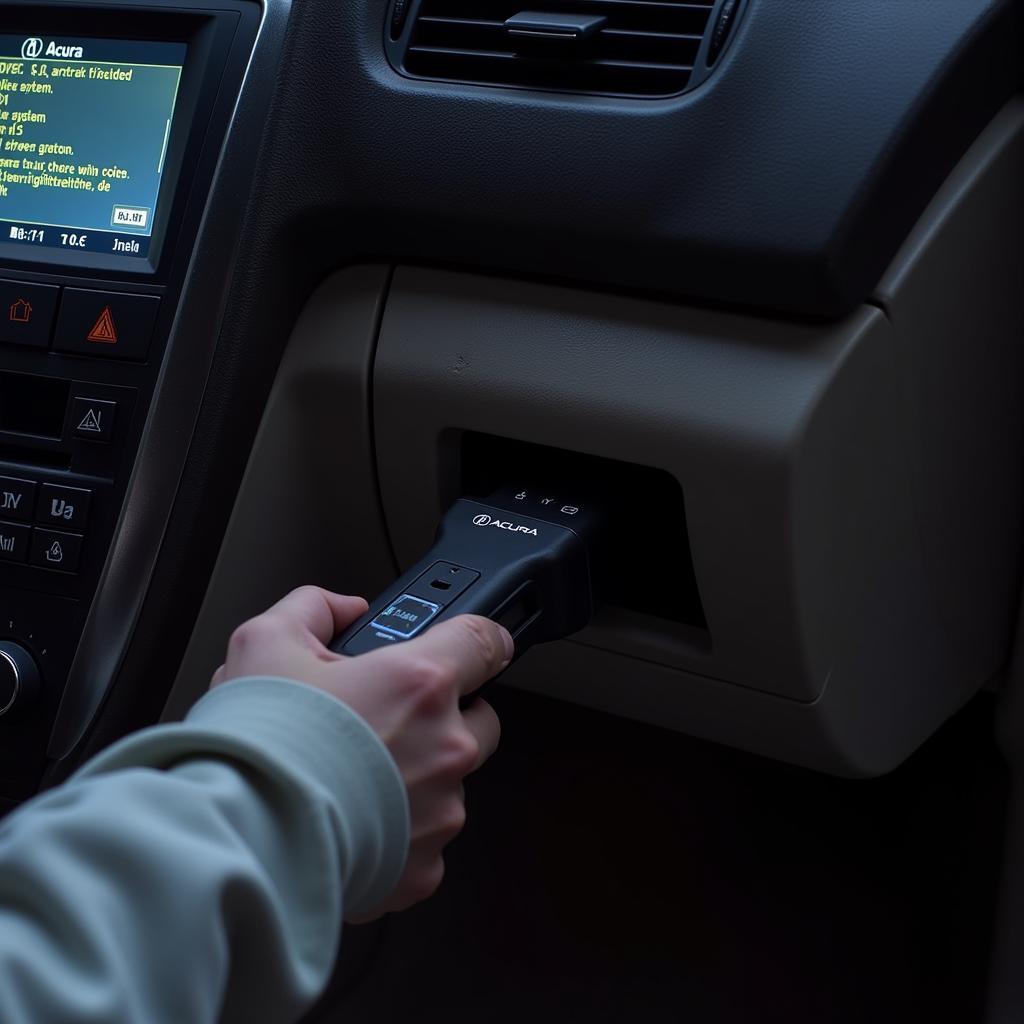The brake warning light on your Acura CL can be a real headache. This guide provides a comprehensive walkthrough on how to troubleshoot brake warning light issues, covering common causes and solutions, allowing you to address this problem effectively and safely.
Acura CL owners often encounter this issue and understanding the potential causes can save you time and money. From low brake fluid levels to more serious issues like a failing ABS system, identifying the root of the problem is the first step. Read on to learn more about troubleshooting your Acura CL’s brake warning light. Let’s get started with diagnosing your brake warning light!
Understanding Your Acura CL’s Brake Warning Light
The brake warning light is a critical safety feature designed to alert you of potential problems within your braking system. Ignoring this warning could lead to serious safety risks. The light could be triggered by a simple issue like a low brake fluid level or a more complex problem involving the Anti-lock Braking System (ABS). Understanding the different possibilities is key to accurately diagnosing the issue. For related information on brake warning lights, you may find this resource on the brake system warning light helpful: brake system warning light.
Common Causes of a Brake Warning Light
Several factors can cause the brake warning light to illuminate. These include:
- Low Brake Fluid: This is the most common culprit. A leak in the brake lines or worn brake pads can cause the fluid level to drop.
- Worn Brake Pads: As your brake pads wear down, the brake fluid level drops, triggering the warning light.
- Faulty Brake Sensor: The sensor that detects the brake fluid level can malfunction, causing a false positive.
- ABS Issues: Problems with the ABS system, such as a malfunctioning wheel speed sensor, can also trigger the light.
- Parking Brake Engaged: If the parking brake is even slightly engaged, the warning light might come on.
Troubleshooting Steps for Brake Warning Light Acura CL
Here’s a step-by-step guide on how to troubleshoot your Acura CL’s brake warning light:
- Check the Parking Brake: Ensure the parking brake is fully disengaged. This might seem obvious, but it’s a common oversight.
- Inspect Brake Fluid Level: Locate the brake fluid reservoir under the hood. Check the fluid level and add brake fluid if necessary. If you need to reset the brake light warning on a 2002 Acura RL, you can find relevant information here: reset brake light warning 2002 acura rl.
- Examine Brake Pads: Visually inspect your brake pads for wear. If they look thin, it’s time for a replacement.
- Check for Leaks: Look for any signs of brake fluid leaks around the brake lines, calipers, and master cylinder.
- Test Your ABS System: If the other checks don’t reveal the issue, the problem could lie within the ABS. A diagnostic scan tool can help pinpoint the problem.
Using a Diagnostic Scanner for Acura CL Brake Warning Light
A diagnostic scanner can be an invaluable tool for troubleshooting the brake warning light. It can read the error codes stored in your car’s computer, providing specific information about the problem.
What if the Integra brake warning light goes on when cold? Check this out: integra brake warning light goes on when cold.
 Using a Diagnostic Scanner on Acura CL
Using a Diagnostic Scanner on Acura CL
When to Seek Professional Help
While some brake warning light issues can be resolved with basic troubleshooting, more complex problems require professional attention. If you’re unsure about any step or unable to identify the cause, it’s best to consult a qualified mechanic. Addressing brake issues promptly is crucial for your safety. This also applies to issues like a brake system warning light on an Acura RDX. You can learn more about that here: brake system warning light acura rdx.
“Brake issues are not something to take lightly,” says John Miller, a certified automotive technician with over 20 years of experience. “Ignoring a brake warning light can lead to dangerous situations. A timely diagnosis can prevent costly repairs and ensure your safety.”
 Professional Acura CL Brake Inspection
Professional Acura CL Brake Inspection
Another common issue relates to the brake lamp indicator warning light. You can find more information on this topic here: brake lamp indicator warning light.
“Regular maintenance, including brake inspections, is key to preventing brake problems,” adds Miller. “This can save you from unexpected breakdowns and ensure your Acura CL remains safe and reliable.”
Conclusion
Troubleshooting your Acura CL’s brake warning light doesn’t have to be daunting. By following these steps, you can identify the cause and take appropriate action. Remember, prioritizing your safety and seeking professional help when needed are crucial when dealing with brake issues. Addressing the brake warning light promptly will ensure a safe and enjoyable driving experience in your Acura CL.
FAQ
- What does the brake warning light mean? It indicates a potential problem with your braking system, ranging from low brake fluid to a fault in the ABS.
- Can I drive with the brake warning light on? It’s strongly discouraged. Driving with a potential brake issue can be dangerous.
- How often should I check my brake fluid? It’s recommended to check your brake fluid level at least once a month.
- What type of brake fluid should I use in my Acura CL? Consult your owner’s manual for the recommended brake fluid type.
- How much does it cost to replace brake pads? The cost varies depending on the type of brake pads and labor rates.
- How can I tell if my brake pads are worn? Visually inspect them for thinness or listen for squeaking or grinding sounds when braking.
- What should I do if my brake warning light stays on after adding brake fluid? It’s advisable to consult a mechanic for further diagnosis and repair.
